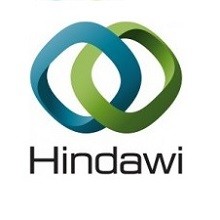
راه حل تحلیل تقریبی نوآورانه برای مدل استاندارد پویایی ویروسی
1- Introduction
2- Standard Model
3- Solution Method
4- Study Case
5- Conclusions
References
Introduction
reatment for chronic hepatitis C infection began in the early 1990s with interferon-alpha [1]. ,is injectable drug worked by improving the immune system, rather than by specifically attacking the virus. In 1998, the oral drug ribavirin was added to interferon [2]. ,e development of the treatment occurred in 2002 with the approval of pegylated interferon-alpha, a process that makes interferon more durable and effective [3]. In 2011, antiviral medications that stop the virus reproducing, which called direct-acting antivirals (DAAs), appeared [4]. Sofosbuvir, commercial name Sovaldi, was approved in the United States in December 2013. Sovaldi-based oral therapy offers high cure rates for HCV infection with excellent tolerability [5]. Currently, the recommended DAA regimens are combinations of multidrug treatments, containing in particular NS5A, NS5B, NS4A inhibitors, such as glecaprevir + pibrentasvir, sofosbuvir and ribavirin (SOF + RBV), telaprevir + pegylated interferon and ribavirin (TVR + PR), sofosbuvir + simeprevir (SOF + SIM), and sofosbuvir + velpatasvir. For more details, see [6, 7, 8]. ,ese regimens offer high cure rates with a rate of curation near 100%.
The quick step of HCV drug development has led to the hopeful estimate that fully eradication of HCV is possible. Although there is still no vaccine for HCV, cure and eradication happened, but further study for the factors that increase this eradication rate is needed. ,e World Health Organization (WHO) has formulated the Global Health Sector Strategy on Viral Hepatitis, 2016–۲۰۲۱, and established service coverage targets to eliminate HCV as a public health threat by 2030 [9, 10]. Meanwhile, there remain many barriers that need to be overcome. Such barriers include the development of simplified and highly effective drug regimens, improving the rates of detection of infection, and the availability of funds including financial and medical expertise.
